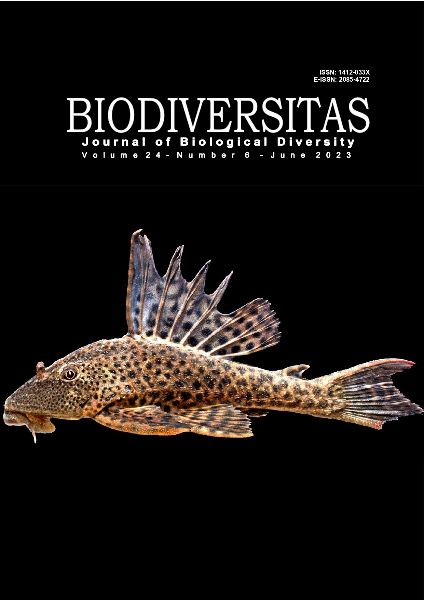Pollination ecology of an important medicinal plant Hellenia speciosa (J.Koenig) S.R.Dutta of Asiatic tropics
##plugins.themes.bootstrap3.article.main##
Abstract
Abstract. Samanta A, Bera B, Karmakar P. 2023. Pollination ecology of an important medicinal plant Hellenia speciosa (J.Koenig) S.R.Dutta of Asiatic tropics. Biodiversitas 24: 3152-3161. Plants often show various floral traits that help them to achieve reproductive fitness. Floral adaptive traits help to maximize the possibility of outcrossing, even for clonally propagated plants. Furthermore, seed setting through successful pollination increases genetic diversity in clonal populations. This present study aimed to describe the flowering phenology, flower biology, pollinators, and breeding system of Hellenia speciosa, a perennial herb with rhizomes from the Costaceae family. According to our study, a pollen-ovule ratio of 210:1 indicates that the plant tends to facultative autogamy; however, the plant exhibits traits such as a large landing labellum for pollinators, bilabiate floral architecture, nototribic blossoms, a prominent nectar guide, abundant floral nectar (27.64±2.661 µL/flower), and high seed set through xenogamy (68.6± 3.07 standard error) to improve reproductive success through outcrossing. Here, the plant is pollinated by two hymenopteran members, namely Xylocopa auripennis and Amegilla zonata. Despite its ample nectar production, the plant is hardly visited by any honey bee species. GCMS analysis of floral nectar found 2-hexanol and derivatives of xylose were probably responsible for pollinator specificity and honey bee exclusion events, respectively.

